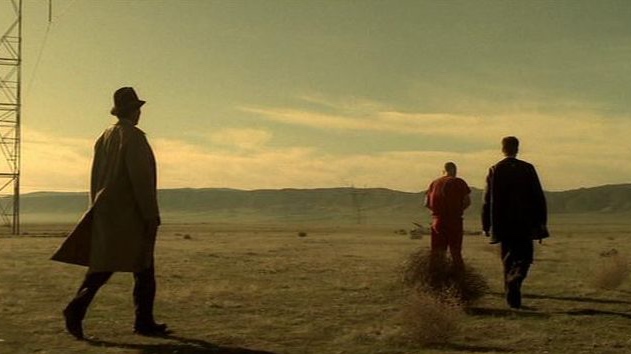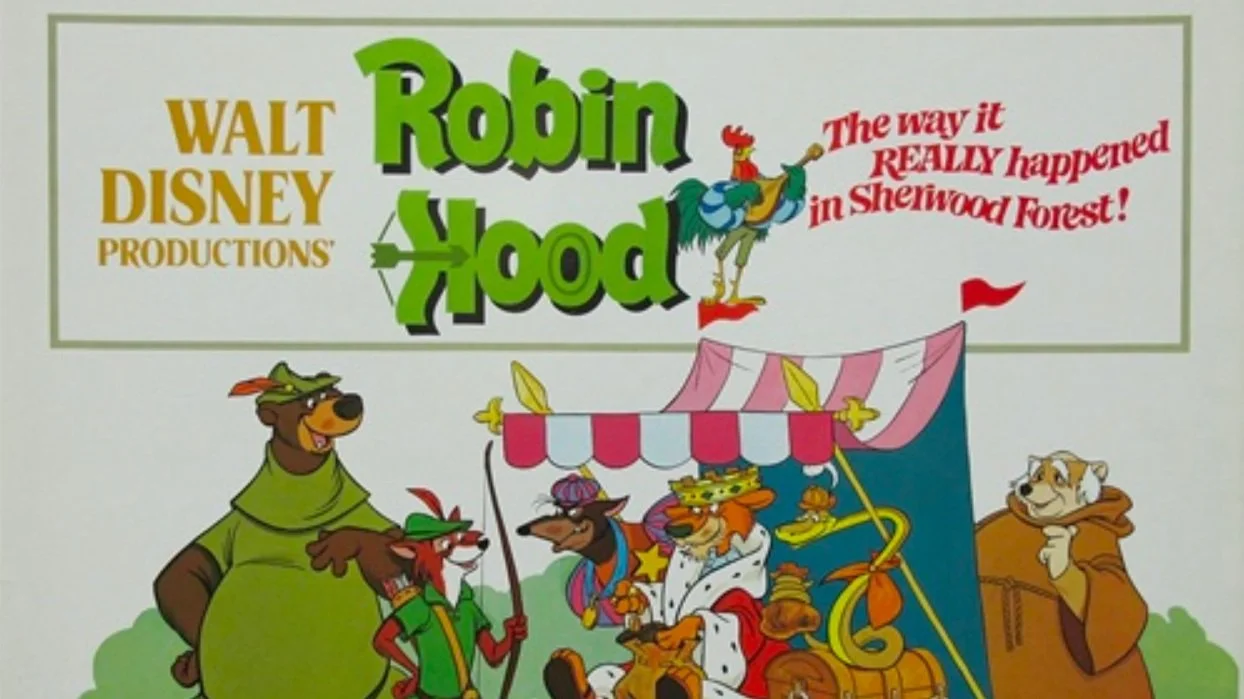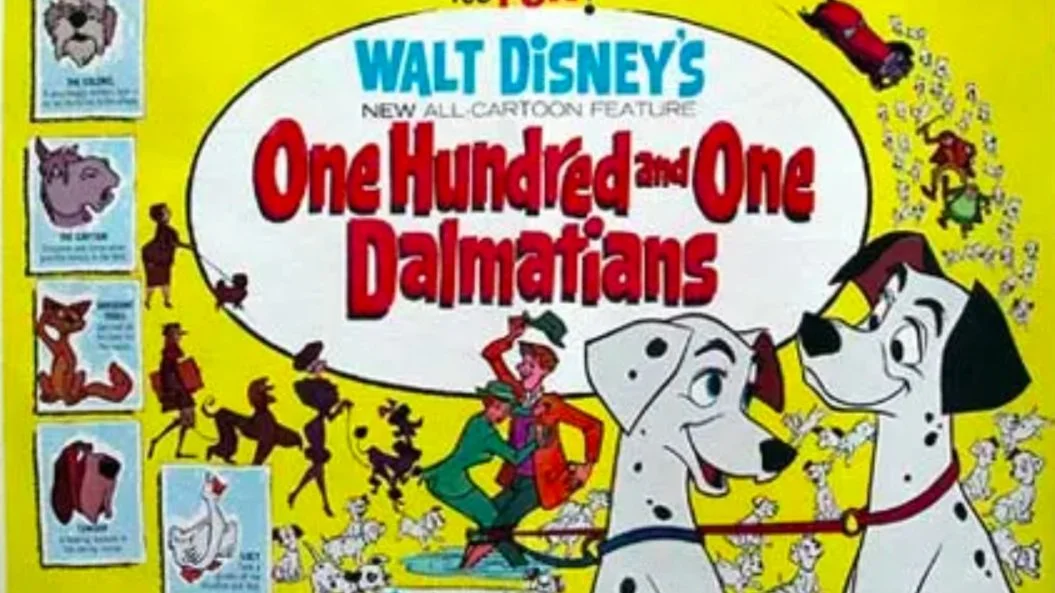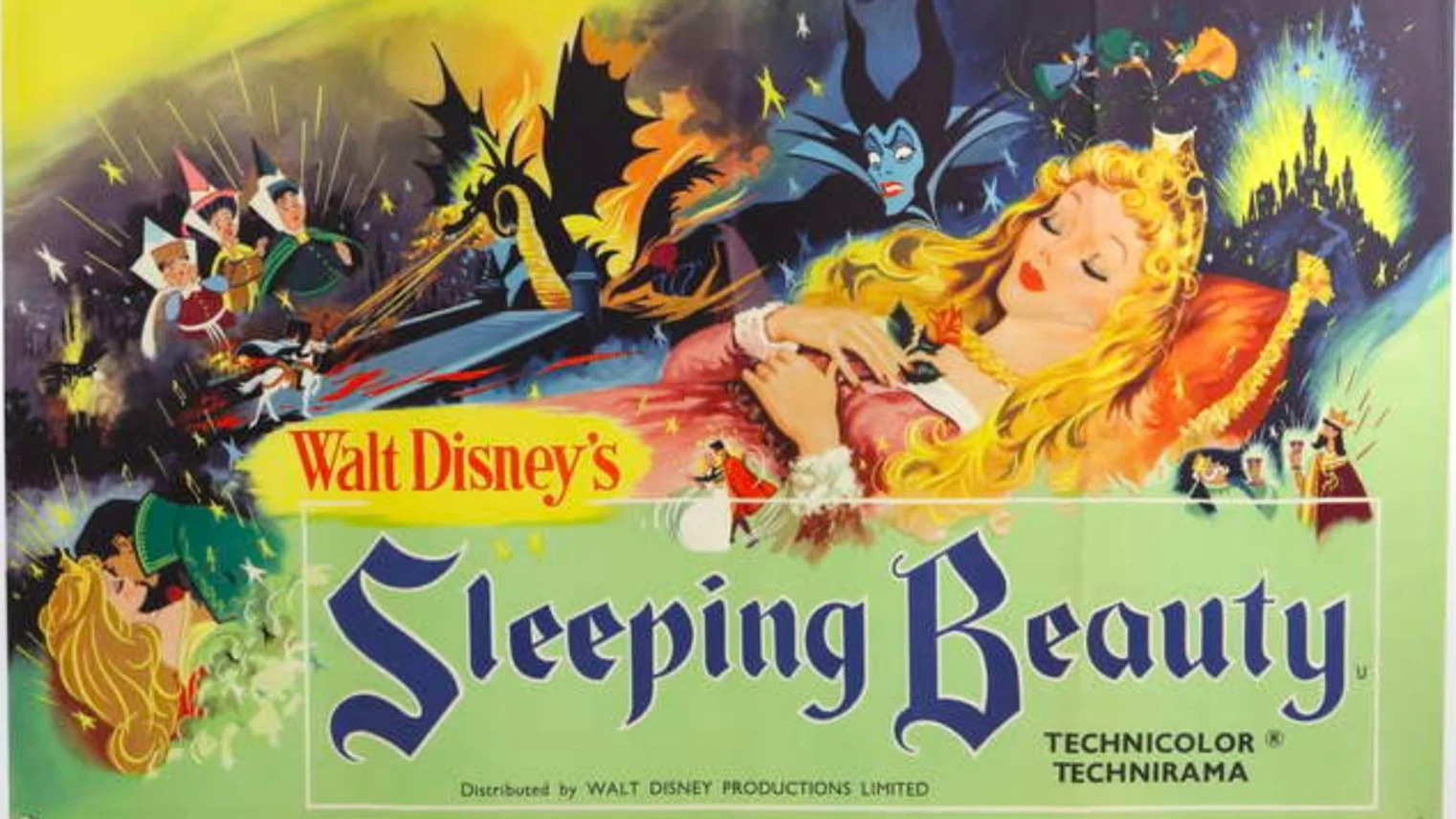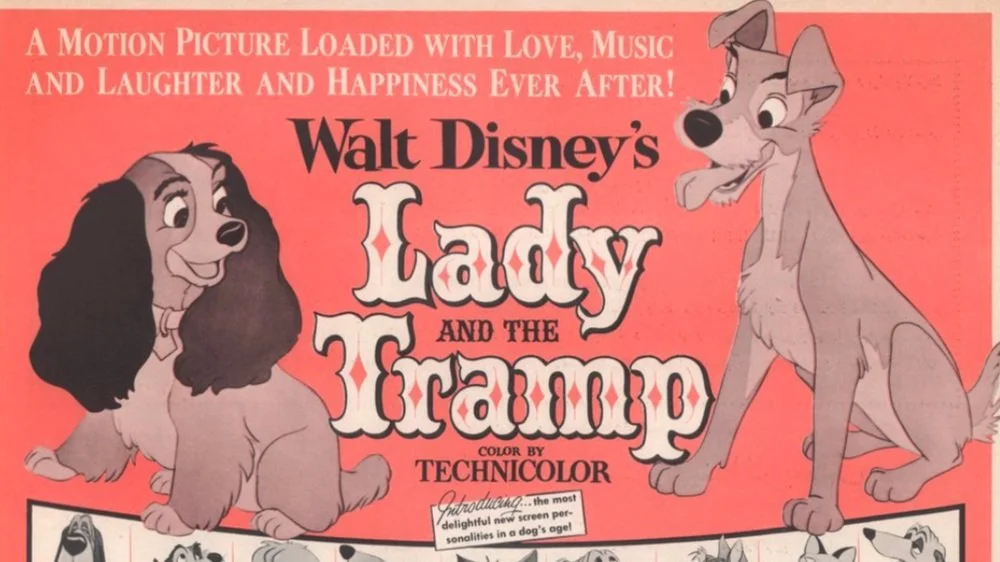The Best of the Best: David Fincher's Se7en
In his new column, Greg Mucci highlights the best film by a chosen director. In this first installment he takes a look at David Fincher’s 1995 onslaught of the macabre, Se7en.
The opening credits to director David Fincher’s attractively repulsive and unappetizingly arresting crime thriller, Se7en, pulsate against the distortion of what appears to be the instrumental rattle of Nine Inch Nail’s ‘Closer’; a cacophony of white noise and twisted steel that sounds like the dying breath of rusted bed springs. Photos submerged in developing chemicals, grimy notebook pages scribed in black ink, and a razor-blade scrapping skin off a pair of fingertips are just a few of the images that flicker across the screen against credits etched into black scratchboard. We may very well be in a darkroom, a tenebrous apartment building, or even hell itself; fire and brimstone replaced with defiled depravities that feel lifted from Dr. Moreau’s laboratory.
It doesn’t quite matter that we’re invited, after all, to witness such a film, because it still feels like something we shouldn’t be seeing. Each jarring frame is so dimly lit that we may be watching through a peephole carved into celluloid, our abhorrence acting as a sort of glue, binding us to our chairs like a diseased fly on skin. If the tone of a film is established early on, then Se7en is detouring through abrasiveness, channeling the industrial rock persuasion of Trent Reznor, who howls “you get me closer to god” as if it were his final words before a death sentence. Look deeper however, and you won’t find any God amidst the piercing horror of Se7en’s intro but the devil, beckoning you into a macabre masterpiece that stands as David Fincher’s best film.
It’s a miserably grim and mercilessly dark opening that carves a path for Se7en’s setting, an unknown and unnamed city — mirrored off the time screenwriter Andrew Kevin Walker spent disdainfully living in NYC — where it rains constantly; its only distinction being the gutters that line its scabrous streets like bowling lanes shuttered for business. It’s a cloyingly dark and suffocating city with buildings that loom over pedestrians who have washed up onto the sidewalk in hopes of salvation. These sardine like structures might very well tower for meters or miles, reaching upwards to the sky with repentant arms that scream, “save me!” We never really know, as we’re only shown the shadowy blocks that make up the maze of a city under constant duress. From crime, apathy, indifference, and a rain so heavy it looks black against the asphalt jungle. Covered newsstands and storefronts give momentary reprieve from the elements, though you won’t find any protection from the despair, as newspapers headline grizzly killings like they were daily sports coverage. Perhaps there is a God somewhere amidst the cruelty of Se7en, though they’re far too busy weeping over a city that, as Morgan Freeman’s plain clothed detective states, “…embraces and nurtures apathy as if it were a virtue.”
This apathy is what drives Somerset (Freeman), a seasoned detective adorned in gumshoe attire, to turn his badge and gun in, quitting the force that has revealed too much muck and mire in a city that seems to take considerable joy in agitating it. Taking his place is Mills (Brad Pitt), a newly transferred detective whose youthful brash hot-headedness doesn’t so much clash with Somerset’s experience as it does compliment it. Their first crime scene together has an obese man strapped to a chair within the confines of a grungy cesspool masquerading as living quarters, forced to eat till he hemorrhages and bleeds internally. Soon, another murder takes place, the word “Greed” smeared in blood on the carpet of a defense attorney’s office, forced to cut a pound of flesh off his body, “no more, no less” Somerset quotes. As more rain and more death pound the pavement, a serial killer emerges, basing each murder off one of the seven deadly sins (lust, sloth, gluttony etc), pulling Somerset and Mills into a case that will reveal far more than either has ever seen.
While Se7en is plainly labeled a thriller in the vein of Jonathan Demme’s Silence of the Lambs, its deliberate choice to conceal the gruesome acts of violence are precisely what make up its horror. Like Somerset and Mills, we stumble upon these measured and methodical acts of depravity, most stuffed into these dimly lit chambers of putrid ungodliness. The obscenities have already been carried out by the killer, coined a John Doe by the police, leaving behind the aftermath of what would amount to a slasher exploit in the horror genre, or the demonic deed of the supernatural. Most of Se7en’s victims are shown through monstrous polaroid’s left behind by the killer, or evidence captured by forensics. This is a film that understands the complexities of horror, savoring the twist of the imagination. A few glimpses of a nightmarish contraption here and the abominable reveal of a body there are just a few of the macabre crumbs that make up the unpalatable plate of inventions ones mind cooks up.
Even the construction of the killer, wrapped around mythology and satanic conjurations, plays off the illustrative power of the what if scenario. Detective Somerset, looking into classic literature at the local library, prophesizes that only Satan himself could possibly reveal such immoralities, planned out with immense rapture. One such crime scene reveals the torture and mutilation of a pedophile, kept on the brink of death for over a year within a cimmerian apartment that appears stained by shadows and lined with hundreds of hanging air-fresheners. Works of Chaucer (Canterbury Tales), Milton (Paradise Lost) and Dante’s Inferno, sketches of twisted bodies and demonic figures by Gustav Dore, paint the killer as an almighty being, otherworldly in both body and intent. And we believe these allusions, passed as rational and tenable because Se7en is assembled on the basis of horror, applied a thrilling grin and set to work in a present day city that feels ripped from some musty, ill-forgotten pulp paperback.
While a few of the interiors are shot with deep browns and enriched in yellows and greens evoking the trappings of a crime novella, most of Se7en and cinematographer Darius Khondji’s lens are filled with fathomless darkness cut with the beams of probing flashlights. We feel as if we aren’t shown what’s necessarily illuminated, just what’s important to the overall feel of the film. Much of the penetrating gloom feels tangible, like a canvas lathered with one too many brush strokes of asphyxiating black. What we don’t see we suffer through, wearing the thick grime of a foul apartment as if it were a trench coat stitched with sin. Pockets lined with citified clamor, acting as thunder amidst the incessant rainfall that neither drowns out nor harmonizes with the denizens of the city.
Detective Somerset, an anomaly of the lonesome sleuth of 1940’s gin-soaked noirs, homogenizes the noise of car horns and heated disputes by falling asleep with the rhythmic swaying of a metronome. He lives in a single, simple apartment — the only clean streak in one of the most soiled mainstream films in Hollywood – where he keeps his switchblade, badge, pen and wallet laid out on his dresser in uniformed fashion. His bed is made in what could be a takeaway from a life in the military, though that would mean he managed to find his way out of a city ravaged by sin. A shirt and tie is laid out on his bed in meticulous folds; nothing is unkempt and nothing is out of focus. It’s a life sequestered from the ones taken all too frequently on the streets. A controlled variable that exists like a man caught between parallel dimensions, who yearns to escape the discordant hopelessness but can never pull himself away from just another case. “Anyone who spends a significant amount of time with me finds me disagreeable.”, Somerset tells Mills and his wife, Tracy (Gwyneth Paltrow) over dinner. We believe it too, given Morgan Freeman’s commanding presence carried through in a meticulous voice that points with conviction. His embodiment of Somerset may be his best role in a career full of composed characters, as Freeman’s comforting presence offers audiences much needed faith — despite his characters detachment — that someday, it will all get better.
Except it doesn’t; a climactic realization that takes us well past the breaking point in a film that already looked to test audience limitations. Even after John Doe turns himself in, willing to plead guilty if Mills and Somerset take him out to where the last two bodies are buried, we still have 30 minutes left, never quite letting on to what its ending might be. One that Fincher, Pitt and Walker fought to maintain, despite the studio, New Line Cinema, finding it almost too bleak to bear. A culmination of Se7en’s palpable framework that plays off the films immeasurable tension, placing audiences firmly within the ill-fated box — the final piece to the killer’s magnum opus delivered by a driver — that has become a permanent fixture in pop-culture ambiguity. We believe we can see past the bloodied cardboard walls, into its unforgivably dismal contents because we see so deeply into Somerset’s horrified reaction after opening it. Grim realization at Doe’s elaborate and operatic killings are cut between Mills incertitude, who for the first time appears green and woefully inexperienced to the unforgiving nature of the world he’s in. Brought to our level. Uncertain of what devastation lies within the contents of a box that’s marked, “fragile”.
It’s an ironic and hopeless joke, slapped on the side of a package that holds nothing tenuous, delivered to a dry and arid land that nurtures nothing, delivered to a man who is immeasurably more fragile than life’s sickest joke. Part of Se7en’s sadistic punchline rests in not seeing what’s inside the box, given how frequently we linger on a piece of John Doe’s crime scene or its aftermath: the enlarged and torn stomach of the fat man on the coroners table comes to mind. Yet what makes it all so effective is, once again, what we don’t see, which Walkers script and Richard Francis-Bruce’s editing understands in an ending that culminates with a masterful crescendo of Se7en’s every component, aided by Howard Shore’s bristling and chillingly deflating score. Despite never catching a glimpse of its contents, our depraved thoughts effectively reveal what’s inside the box, powerfully shifting the dynamic over to John Doe, who Somerset declares, “has the upper hand.”
Which he does, a realization further solidified upon multiple viewings. There’s a moment after Doe’s arrest that has Somerset and Mills exchanging pleasantries and jokes within the perpetually grimy interior of the police station bathroom. Gone are the low angles and over saturation of the frequently obscured crime scenes, instead replaced with two men who, for the first time, feel as if they in fact have the upper hand. It’s a momentary reprieve from the bile strewn contents we’ve become accustom to for nearly 2 hours, yet revisiting it, the scene becomes a victim to hopelessness, their brief fit of joy turning into our grim realization that nothing will be okay.
Where the ending relies on the impact of the twist, a one-off for so many films, this particular quiet-before-the-storm moment relies entirely on our understanding that John Doe’s sick joke is on them, becoming more achingly real the more you reckon with its aftermath. Or perhaps its greatest joke is on us, tricking audiences into thinking that it all can end happy. Not because there’s anything remotely rapturous about its contents, but because the experience of watching Se7en feels momentous every time, effectively reminding us why it still stands as David Fincher’s best film.




